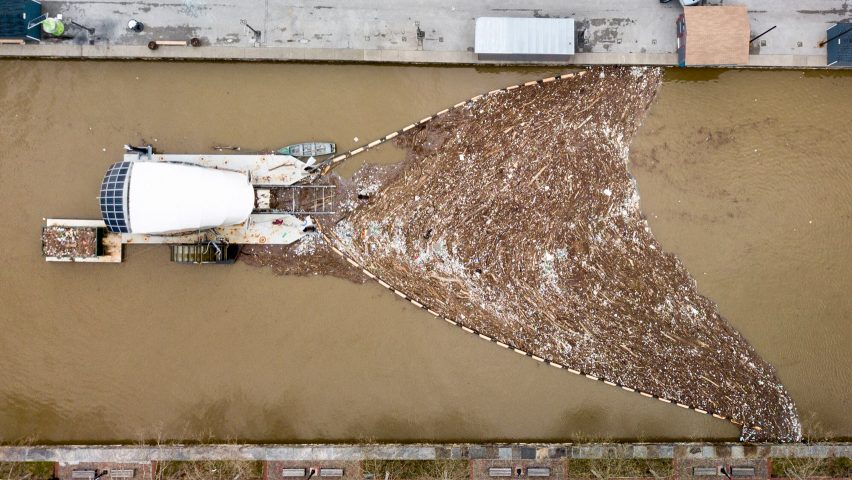
Four technologies tackling the problem of plastic pollution in rivers
Most ocean plastic starts off in rivers. From bubble curtains to googly-eyed trash wheels, here are four technologies designed to intercept river plastic before it gets to the sea.
Last month The Ocean Cleanup turned its attention to river plastic and launched the Interceptor, a floating device it claims can harvest up to 100,000 kilograms of plastic waste per day.
"To truly rid the oceans of plastic, we need to both clean up the legacy and close the tap, preventing more plastic from reaching the oceans in the first place," said Boyan Slat, founder of the organisation that has until now focused on trying to remove plastic already in the oceans.
However many experts believe that extracting plastic from the ocean is the wrong approach. "To be very honest, I don't believe that we're going to clean up the oceans," said Cyrill Gutsch, founder of Parley for the Oceans, in an interview with Dezeen earlier this year.
Of the 300 million tonnes of plastic produced every year, up to eight million tonnes ends up in the ocean.
A 2017 report published in the Environmental Science and Technology journal revealed that 88 to 95 per cent of the plastic waste transported to the ocean via rivers comes from just ten rivers. These include the Nile, the Yellow River and the Ganges.
An estimated 4.8 to 12.7 million tonnes of plastic end up in the oceans each year. Circular-economy charity the Ellen MacArthur Foundation estimates that by 2050 there will be more plastic than fish in the oceans.
Here are four projects attempting to stop plastic from reaching the ocean:
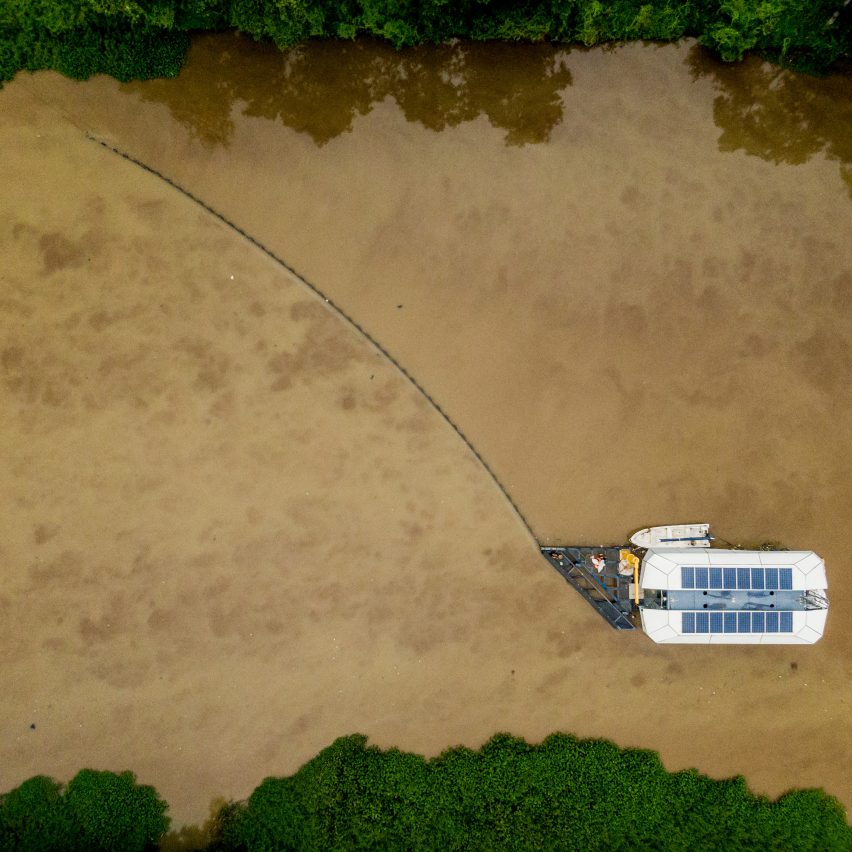
Interceptor, by The Ocean Cleanup
The Ocean Cleanup's attempt at cleaning up ocean plastic has gotten off to a rocky start. The floating barrier designed to catch plastic from the sea has suffered setbacks with damage from wind and waves. While the project is still going ahead, the organisation has also turned its attention to river plastic.
"Combining our ocean cleanup technology with the Interceptor, the solutions now exist to address both sides of the equation," said Slat, the organisation's founder.
The Interceptor is an autonomous solar-powered device that uses a barrier stretching across a river to collect plastic. Rubbish is funnelled towards a floating processing plant that resembles a barge. The trash is passed up a conveyor belt and deposited into bins, which signal to the system when they are full so that a boat can come and pick them up for recycling.
Currently there are Interceptors operating in Malaysia, Indonesia and Vietnam, with more planned for the Dominican Republic and the USA.
Read more about the Interceptor ›
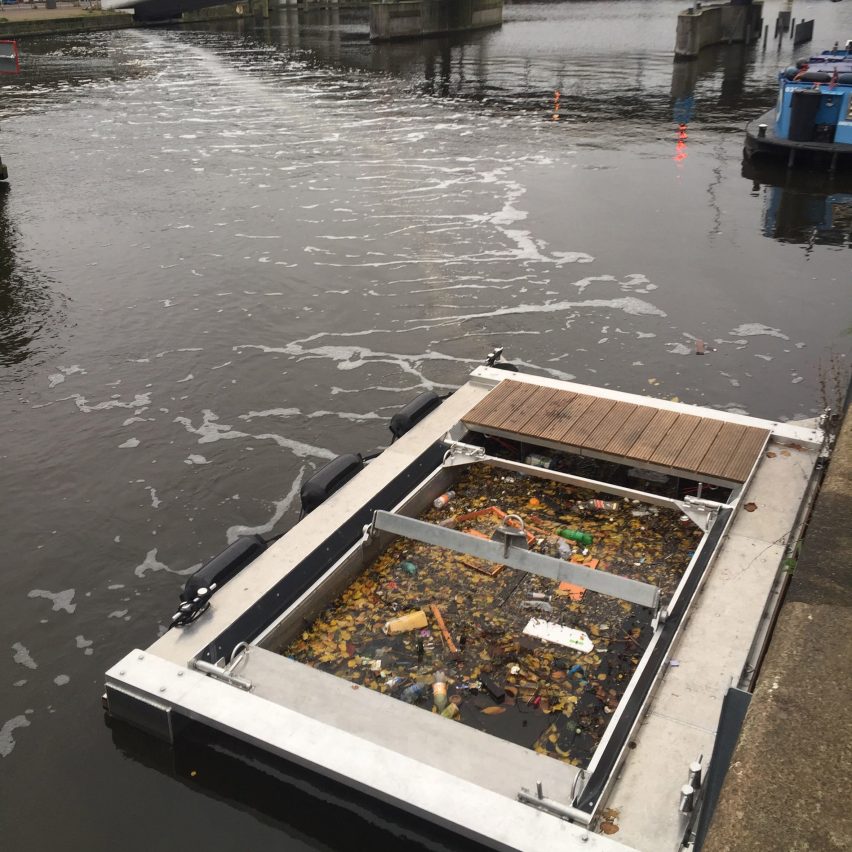
The Bubble Barrier, by The Great Bubble Barrier and Waternet
Waternet, which manages Amsterdam's waterways, deploys five garbage boats that fish out 42,000 kilograms of plastic every year. Earlier this year Waternet also deployed a barrier of bubbles to tackle plastic waste in the city's canals.
"Plastic in our water is becoming an increasing problem," said Sander Mage, executive member of Amsterdam's water board. "It has profound effects on the quality of our water and therefore on everything that lives in or near the water."
The Bubble Barrier is a perforated tube laid across the bottom of the canal with compressed air pushed through it. It runs 24 hours a day, seven days a week, forming a screen that catches floating debris.
Plastic pieces are caught by the bubbles and pushed to the surface, where they are carried by the current to a catchment pool.
Waste collected by the Bubble Barrier will be tested by the Plastic Soup Foundation to measure how much plastic is caught, what kind of objects they are, and what the most common brands are.
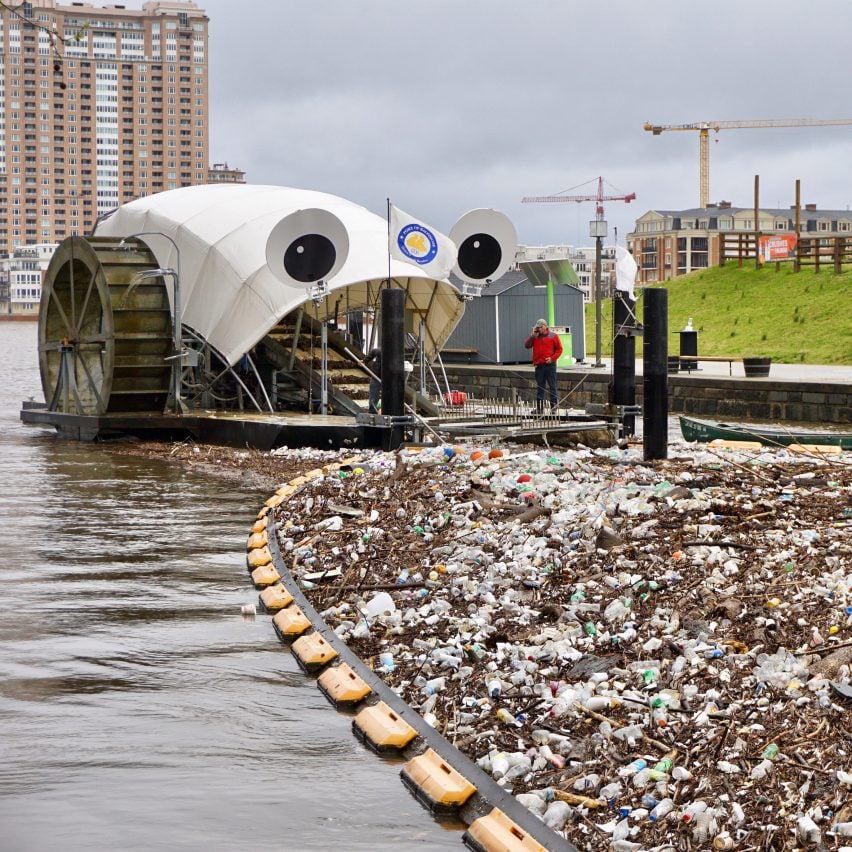
Mr Trash Wheel, by Clearwater Mills and the Waterfront Partnership
Mr Trash Wheel, an anthropomorphic trash interceptor with googly eyes and his own Twitter account, has been scooping rubbish out of the Jones Fall River in Baltimore since 2014.
In 2016 he was joined by the female-gendered Professor Trash Wheel, with the gender neutral Captain Trash Wheel launched in 2018. The fleet of trash-collecting vessels has collected a total 907 tonnes of rubbish.
The vessels are powered by waterwheels and the river's current, with solar panels for backup on slower days. Debris is collected by floating barriers and the wheels power a conveyor belt that transfers the rubbish out of the water and into a bin.
As well as stopping plastic reaching the ocean, the wheels are contributing to the goal of making the harbour swimmable by 2020.
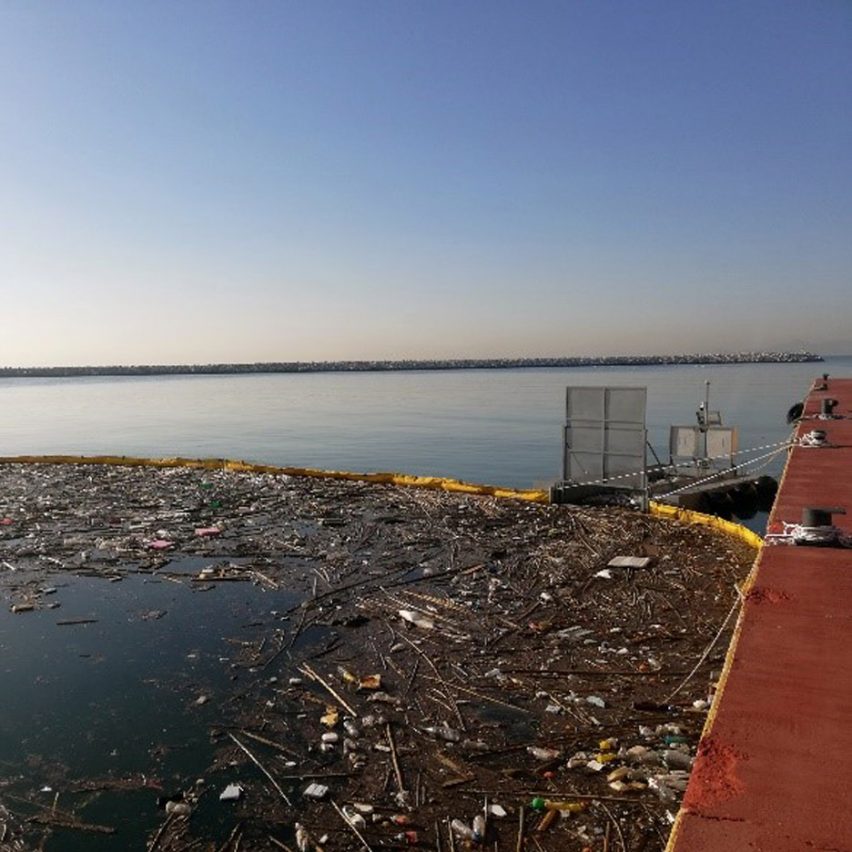
Floating boom, by CLAIM and New Naval
As one of the five Cleaning Litter by Developing and Applying Innovative Methods in European Seas (CLAIM) projects run by the EU, a floating boom has been installed at the mouth of the Kifissos River in Athens, Greece.
The floating boom is called the Tactical Recovery System Hellas, or TRASH, and was manufactured by New Naval.
Using technology New Naval developed for responding to oil spills, the mesh barriers collect river plastic and channels it towards a floating cage. This is used to lift the plastic up to the level of the harbour wall so it can be removed.